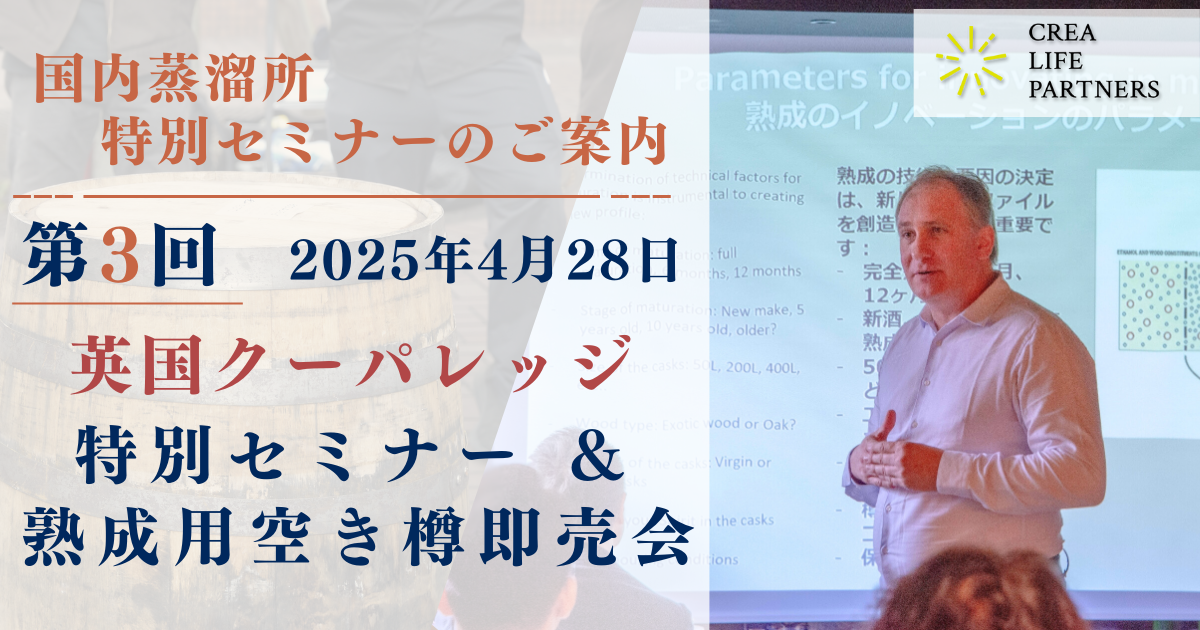
【国内蒸溜所向け特別イベント】2025年4月28日開催:英国クーパレッジ特別セミナー&熟成用空き樽即売会
- 造り手
- イベント告知
- 樽・蒸溜機・倉庫
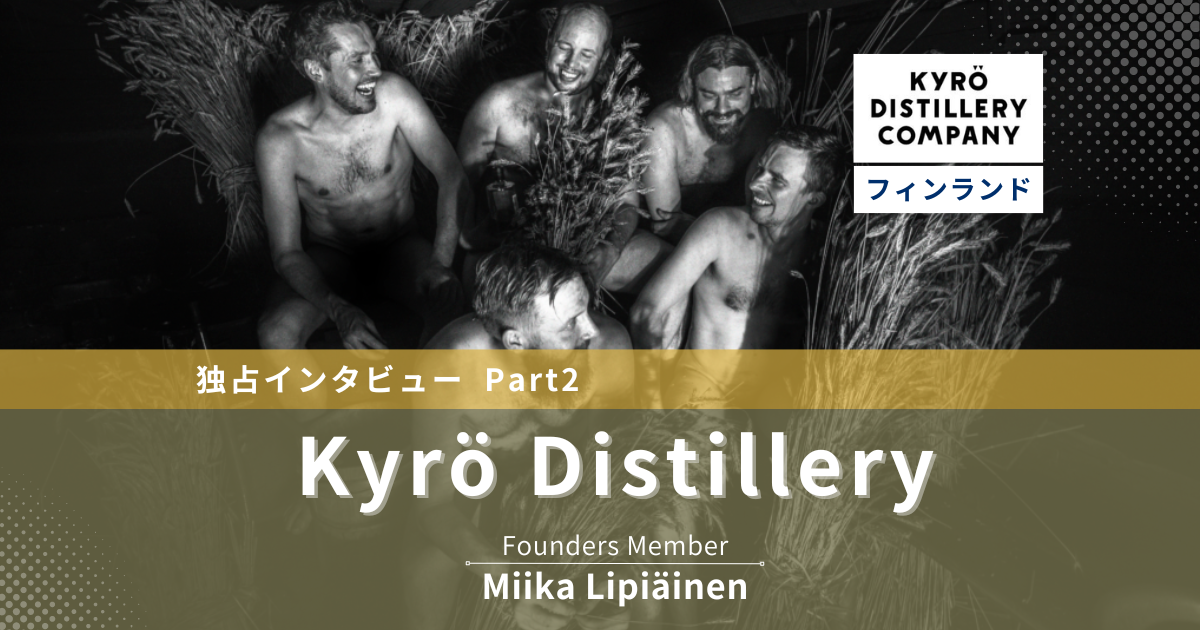
Kyrö Distillery in Finland is redefining the world of rye whisky with their bold use of 100% Finnish rye.
Their whiskies are not just delicious but offer a true experience of Finland—its soil, its people, and its culture.
In this second part of our interview, one of the five co-founders, Miika Lipiäinen, shares their perspective for Kyrö whiskies and its production line, and talks about his current PhD—yes, it’s on whisky!
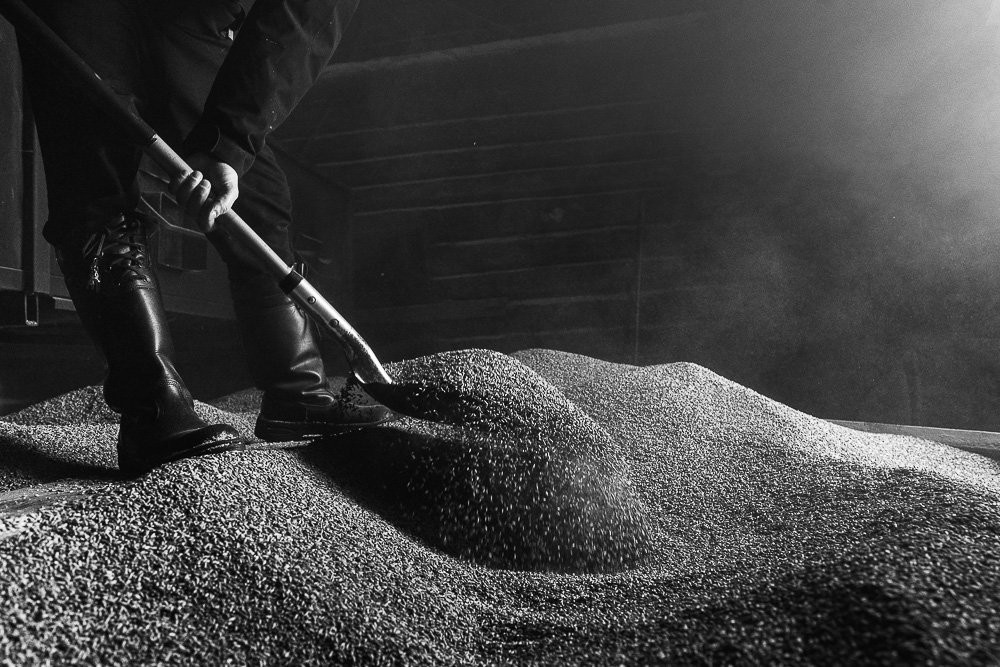
Riihi Wood Smoke
Dear WHISKY:
What was your approach to design the distillery?
Miika:
To design our production process, we had to adjust the grain treatment from milling onward to fully maximize the rye flavour.
Our goal is to become the world’s best at distilling rye, so we focus exclusively on 100% rye whiskies — no barley or corn.
We also chose to produce gin, because we’ve got Finland’s fantastic local botanicals.
Dear WHISKY:
Is it closer to that of an American rye whisky distillery, or does it follow more traditional Scotch methods?
Miika:
Our fermenters are closed and our stills are copper pot stills, which blend elements of American, Scottish, and Canadian traditions.
The process we’ve developed is truly our own, designed specifically to preserve a lot of rye flavor that comes from the grain’s outer surface.
Dear WHISKY:
Could you give us an example of adjustments you made in designing rye whisky distillery?
Miika:
Our pumping system must be exceptionally robust and reliable. When transferring the whole grain to the still, the heating and cleaning systems need to accommodate the entire grain mass to prevent burning and ensure effective cleaning.
Dear WHISKY:
What challenges come with focusing on rye whiskies?
Miika:
Rye typically yields less pure alcohol than barley.
However, we’ve made significant progress, improving our yield by about four and a half times since we first started.
This is not only beneficial economically but also environmentally, as it allows us to use resources more efficiently.
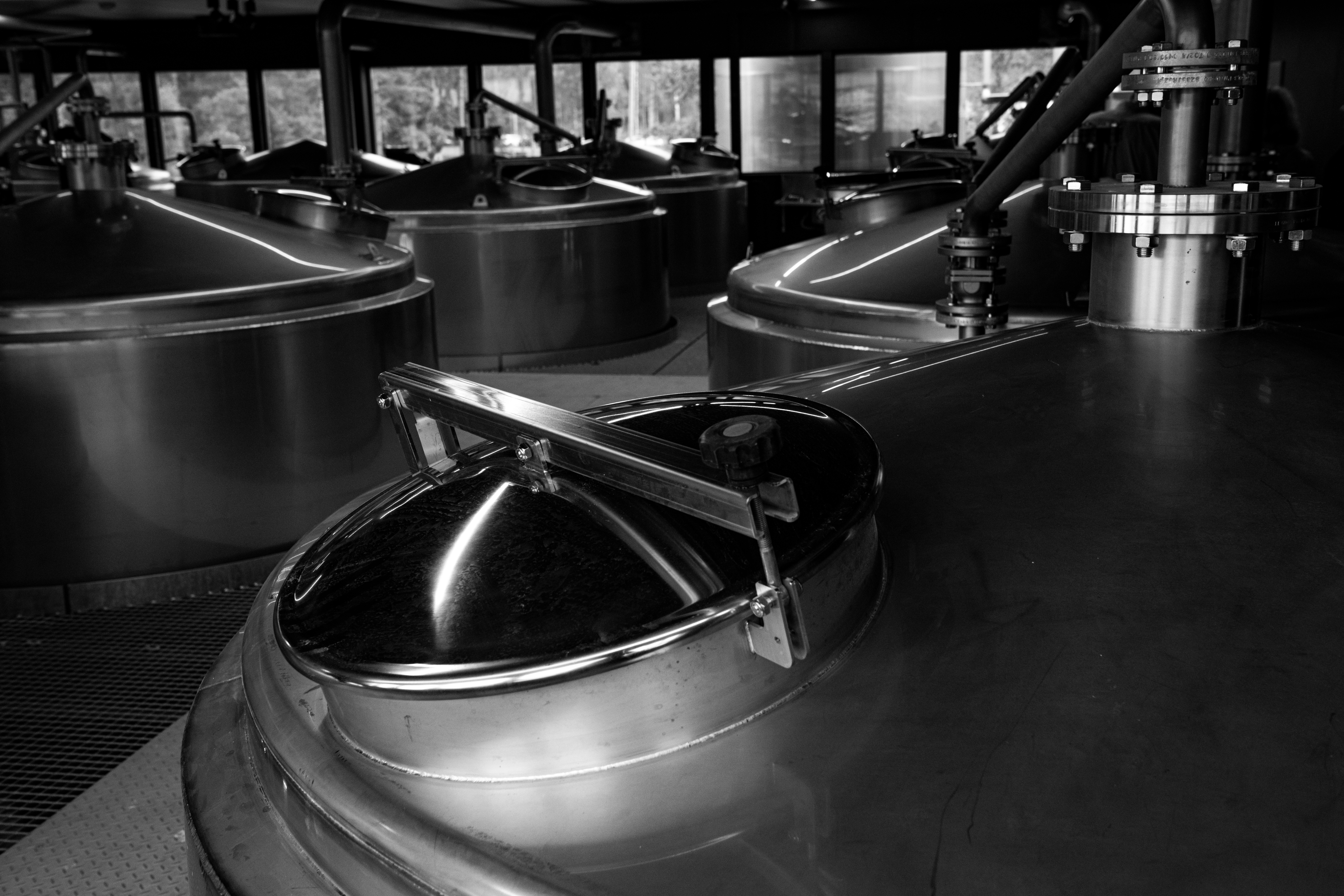
Mash Tun
Dear WHISKY:
How do you handle the mashing?
Miika:
Mashing with rye is quite different from barley-based mashing. In barley mashing, the husk is typically used to filter the mash at the bottom of the mash tun, but with rye, we don’t wouldn’t have that. Additionally, since all the flavour of rye is on the outer surface of the grain, we make sure our process preserves every bit of it.
Dear WHISKY:
How do you approach fermentation?
Miika:
We experiment with different types of yeast, including koji as a substitute for traditional malting. This changes the character, resulting in a unique flavor profile distinct from Western yeasts.
We also extend our fermentation to around 144 hours to develop a rich, complex flavor, all while exploring the effects of various yeast strains.
Dear WHISKY:
Are there any specific considerations you need to be mindful of during fermentation?
Miika:
We have to consider the big temperature swings between Finnish summers, which can reach over 30℃, and winters, which can drop to minus 30℃.
These extremes definitely affect fermentation, even with our temperature-controlled system.
We also have to adjust our production schedule accordingly; we can’t simply replicate methods from Scotland.
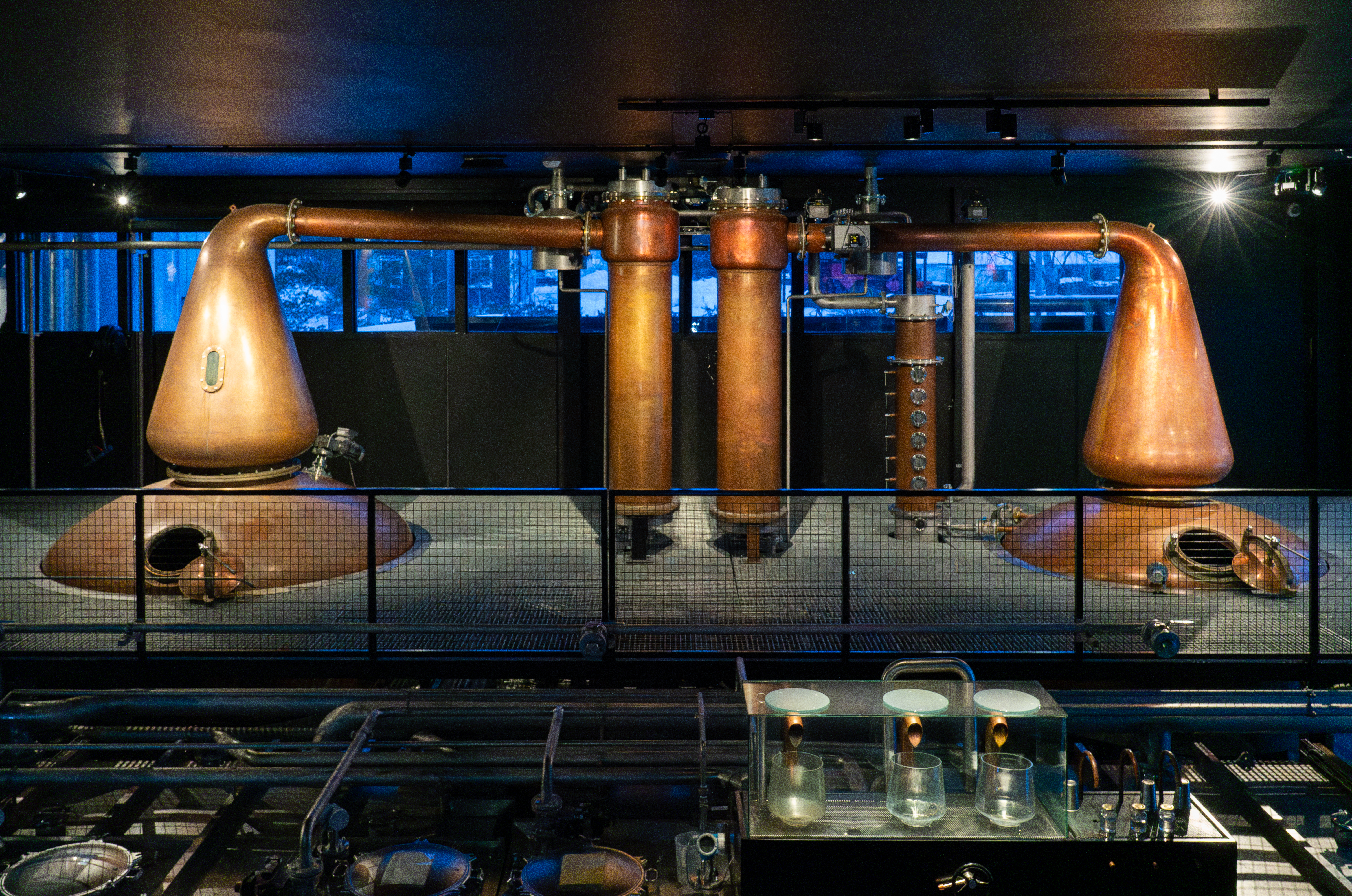
Pot Stills
Dear WHISKY:
Could you explain about your distillation process?
Miika:
Our distilling process follows an all-grain style, where we don’t filter, water down, or separate anything from the mash.
Everything, including all the protein, husks, and solids, goes straight into the still.

Maturation warehouse
Dear WHISKY:
Where do you situate your maturation warehouse?
Miika:
Our main warehouse, built in 2019, is just next to the distillery in a small forest. Finnish regulations require us to keep the temperature below 22℃ to prevent explosion risks. So, we have air conditioning to ensure it stays below 22℃, which adds extra costs, especially in winter.
Dear WHISKY:
How does the extremely cold Finnish weather impact the maturation process?
Miika:
During winter maturation, there are two approaches distilleries tend to use: some prefer very cold conditions to push liquid out of the wood, increasing certain sort of the interaction, while others heat the warehouse to keep the micro movement of the liquid active.
We combine both methods, utilizing excess heat from distillation to maintain warmth while also letting natural cold influence the aging process.
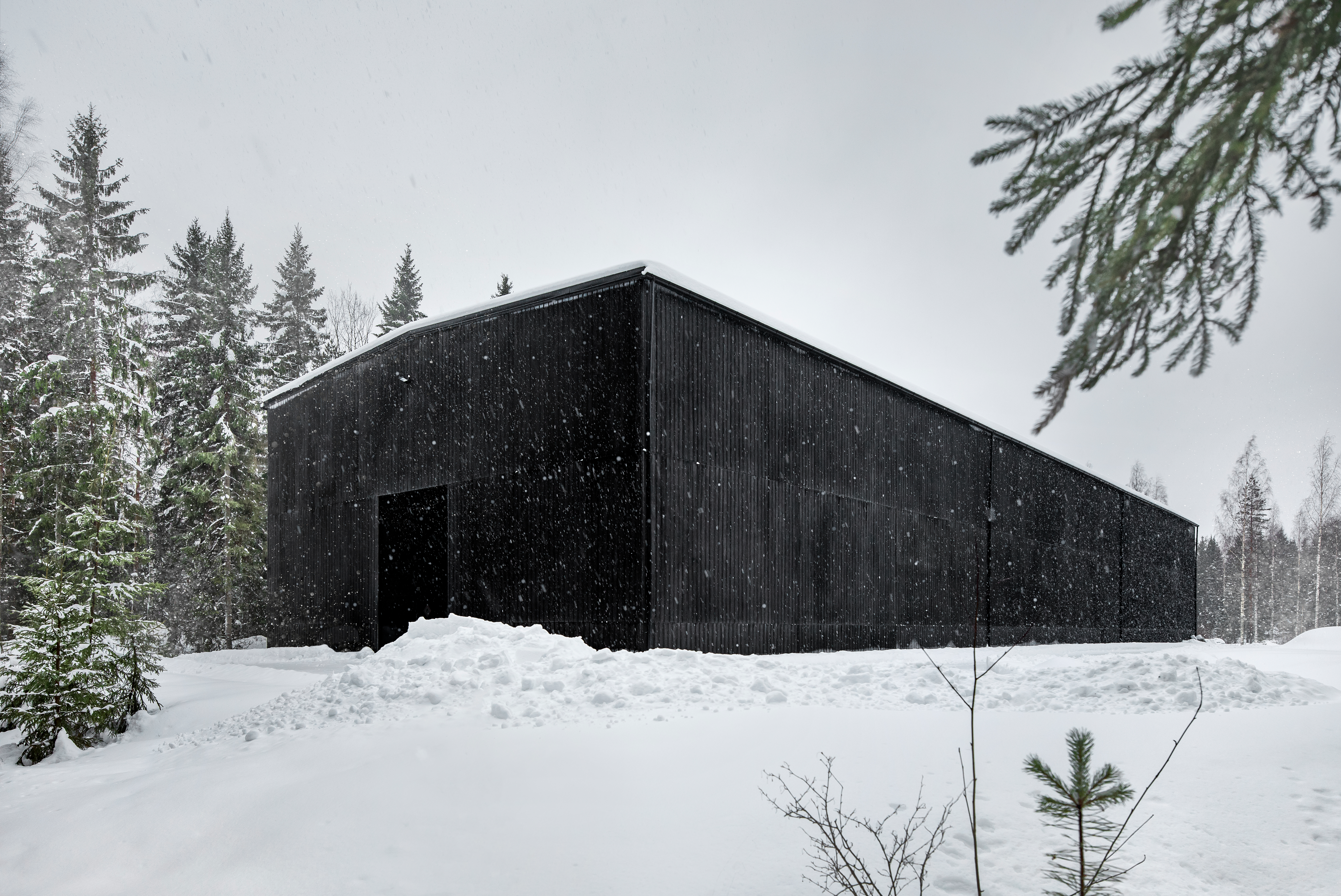
Maturation warehouse in winter
Dear WHISKY:
Are there other considerations you must be mindful during fermentation specific to the Finnish distillery?
Miika:
Our dry climate requires us to add moisture and air circulation in the warehouse to maintain suitable airflow for optimum maturation. We just have to try everything out in our new region and style, using various warehouses where we can try different climate conditions.
Dear WHISKY:
What would happen if you don’t use a humidifier?
Miika:
In Kentucky, dry conditions can cause water to evaporate faster than alcohol, raising the ABV and impacting the aging and oxidation profile.
We experience similar effects, which could result in the whisky maturing too quickly.
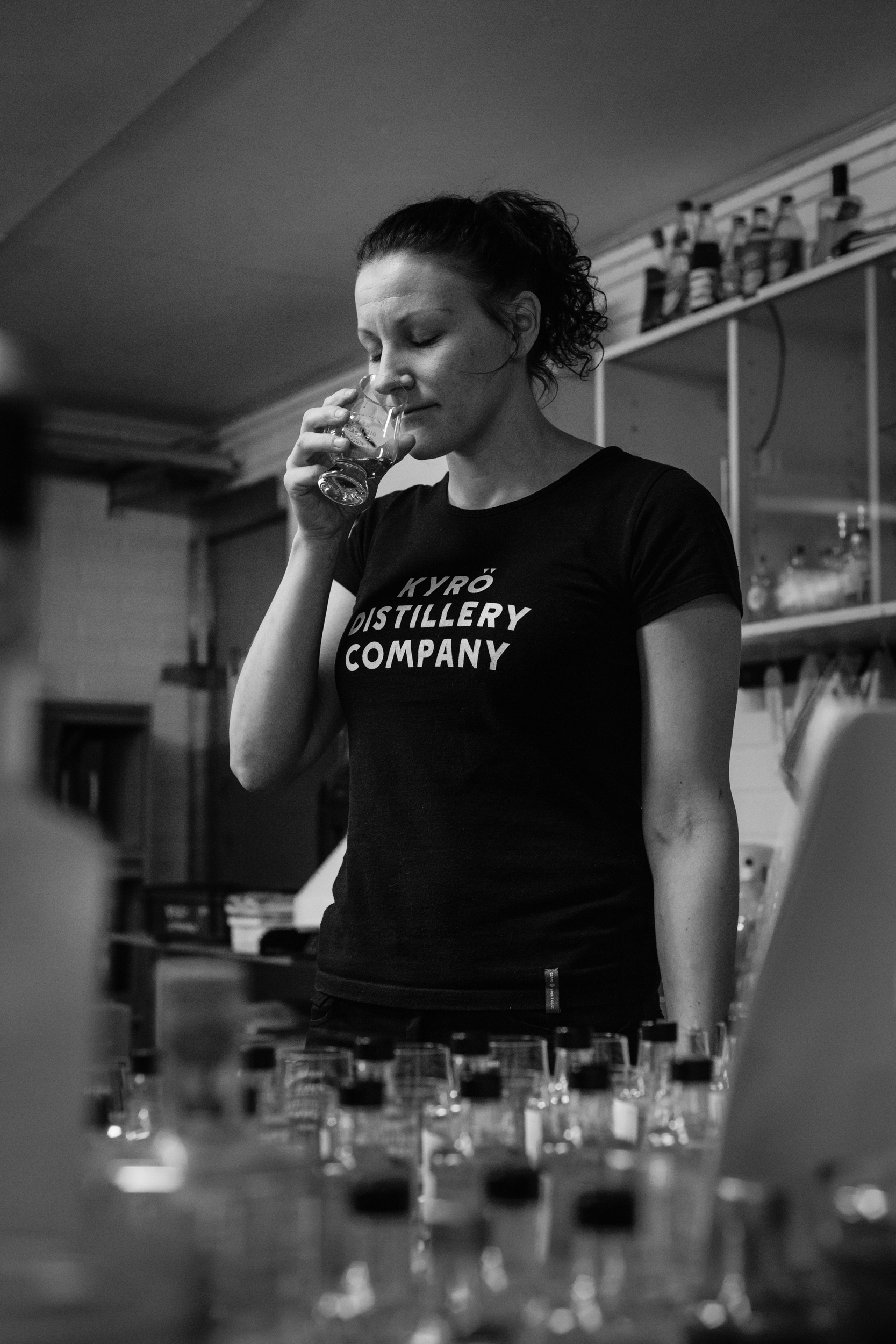
Whisky quality tasting
Dear WHISKY:
How long did it take to perfect your whisky?
Miika:
Whisky is never truly “ready”; it’s a constant process of learning, improving, and experimenting. I wouldn’t say we’re there yet.
However, we’ve already developed a distinct style and choosing our Finish rye already makes a difference.
We continue to evolve our system and refine our processes to build upon what we’ve already achieved.
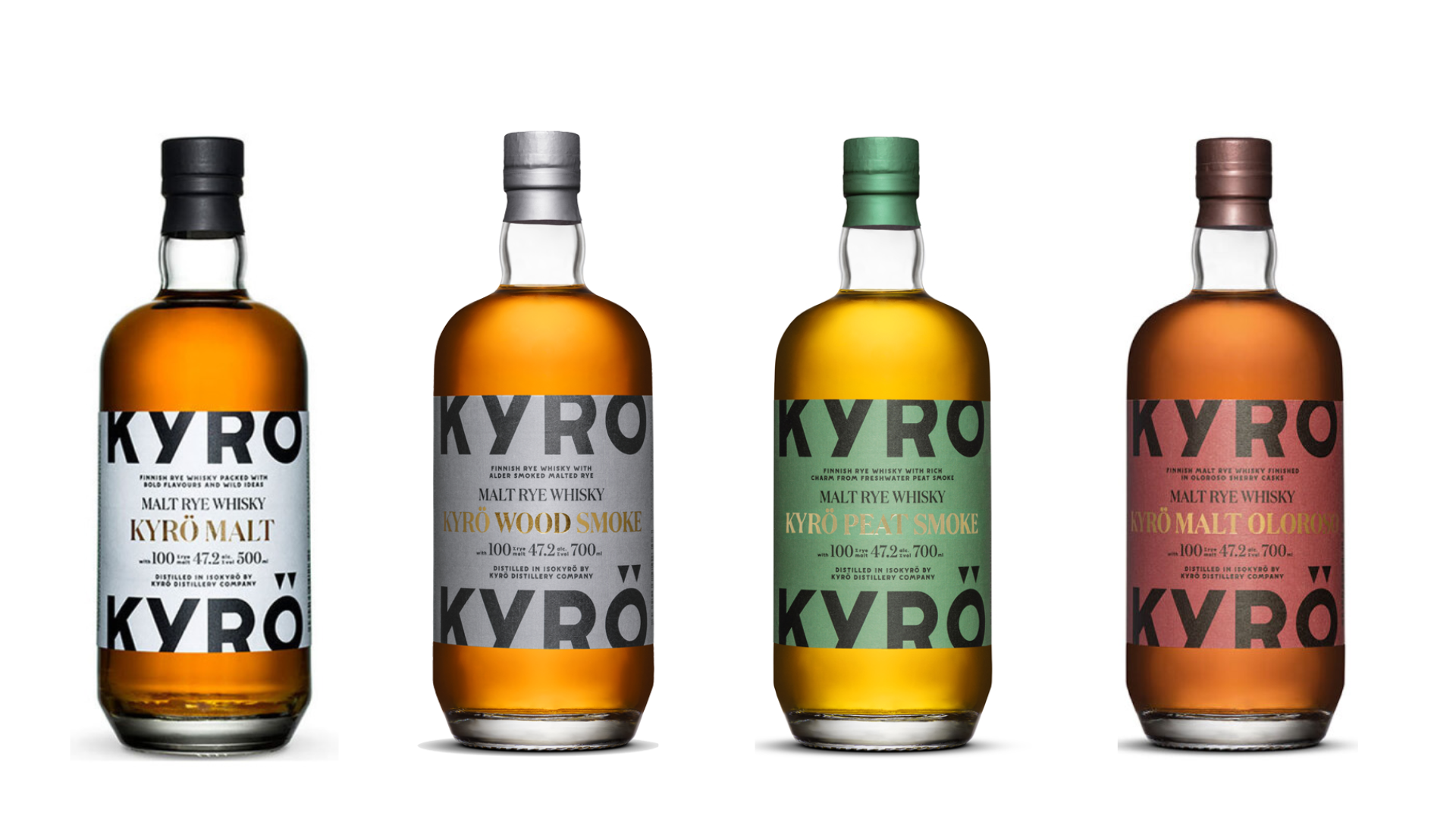
Kyrö Whiskies ― MALT, WOOD SMOKE, PEAT SMOKE, MALT OLOROSO
Dear WHISKY:
Could you tell us about your bottle releases?
Miika:
Over the years, we’ve had various small-batch releases, but in 2017, we launched our core range, “KYRÖ MALT.” Since then, we’ve added three more expressions to our core lineup: WOOD SMOKE, PEAT SMOKE, and MALT OLOROSO. The sweet character of rye pairs beautifully with the drier notes of sherry.
Dear WHISKY:
What does Finnish peat bring to your whiskies?
Miika:
Using Finnish local peat gives our rye a very different flavour compared to Scottish peat. We smoke rye in the traditional Finnish style, much like how it’s done with other products like fish.
Historically, we’ve dried rye after harvest by smoking or burning it with fire.
Dear WHISKY:
What makes such a flavour difference between Scottish peat and Finnish peat?
Miika:
Finland’s land is much older than Scotland’s. The plant composition in peat is different. Finnish peat contains a lot more saltwater plants and has top layers of freshwater plants, creating a distinct flavour profile.
Unlike Scotland’s briny, salty peat, Finnish peat brings a mossy and herbal character.

Taken by consumer
Dear WHISKY:
How do you want people to experience Kyrö whiskies?
Miika:
Although our whiskies are well made with really high quality, we aim for them to be approachable every day. We want people to sit back, relax, and enjoy them in a casual, laid-back way.
Dear WHISKY:
What Kyrö whisky do you personally prefer?
Miika:
It depends on the occasion. If I’m looking for something easy to enjoy on its own or in a cocktail, I’d usually go for the “KYRÖ MALT”. For sipping neat, right now I choose “KYRÖ PEAT SMOKE,” which offers a sweet, herbal style of smoke that’s unique to this whisky. Everyone picks their favorites, but I usually just reach for “KYRÖ MALT.”
Dear WHISKY:
How can you use Kyrö whisky in cocktails?
Miika:
I especially enjoy KYRÖ WOOD SMOKE in cocktails like Old Fashioned, Manhattans, Boulevardiers, and Whisky Sours—pretty much anything.We want to keep the barriers very low, so you don’t have to worry about your previous whisky experience.
Our goal is for Kyrö whiskies to be consumed, not collected.
Dear WHISKY:
What is your future prospective?
Miika:
For the distillery, our whisky journey feels like it’s just the beginning. Having a core range now means that people have something familiar they can enjoy and return to when they want more. Meanwhile, the dialogue with our fans is a key to start consistently improving. It’s all about maintaining that mindset of discovery and wonder.
Our goal is to create something generational —a new style from a new region that will leave its mark on the world map of whisky.
Dear WHISKY:
How about yourself?
Miika:
I’m currently on an academic break from operations, but I’m still involved.
My PhD research focuses on how the whisky category evolves ― what drives its renewal or resistance to change.
It’s a personal journey of discovery, and I’m also taking a different perspective on my whisky journey. I’m excited about contributing to this important topic for whisky and other markets, as I work towards completing my PhD.
Dear WHISKY:
That sounds a very important research for the industry.
Will it be publicly available?
Miika:
It’s a public piece of research, so I’m going to be publishing articles. It’ll be a bit more esoteric for instance a scientific literature review and empirical papers that are done from data I get from interviews and other sources in whisky. Hopefully, final paper is going to not only interest but impact to anybody in the whisky industry.
Dear WHISKY:
Could you share a message for Dear WHISKY Readers?
Miika:
Although the tradition of Scottish-style single and many new distilleries, including those in Japan, are fantastic, I encourage everyone to explore the different ways whisky is made.
Some of these might not be to your taste, but by expanding your palate, you gain a direct window into the nature, soil, and social culture of a country or region.
That’s what we’re trying to achieve with Kyrö—a real connection to the roots of the whisky and where it comes from, rather than just replicating what’s been done in Scotland or the USA for years. When you drink our whisky, you’re experiencing a piece of Finland.
This has been an inspiring conversation with Miika Lipiäinen, one of the five driving forces behind Kyrö Distillery. Their passion for unlocking the full potential of Finnish rye has not only crafted remarkable whiskies but also shared a piece of this beautiful country with the world.
From five men in a sauna to a global team of multi-talented individuals, Kyrö Distillery has already come a long way ― And their journey is only getting more exciting.